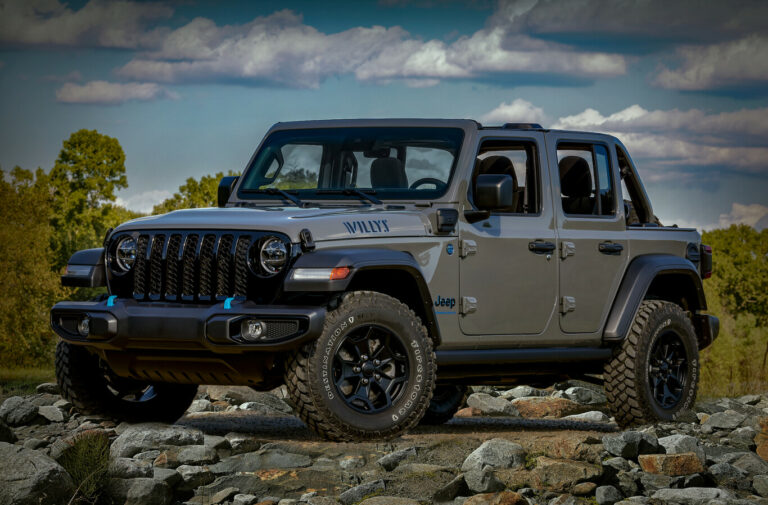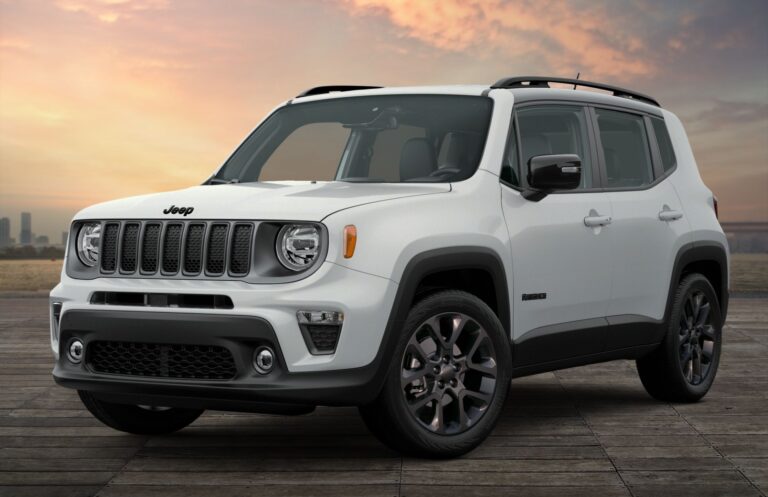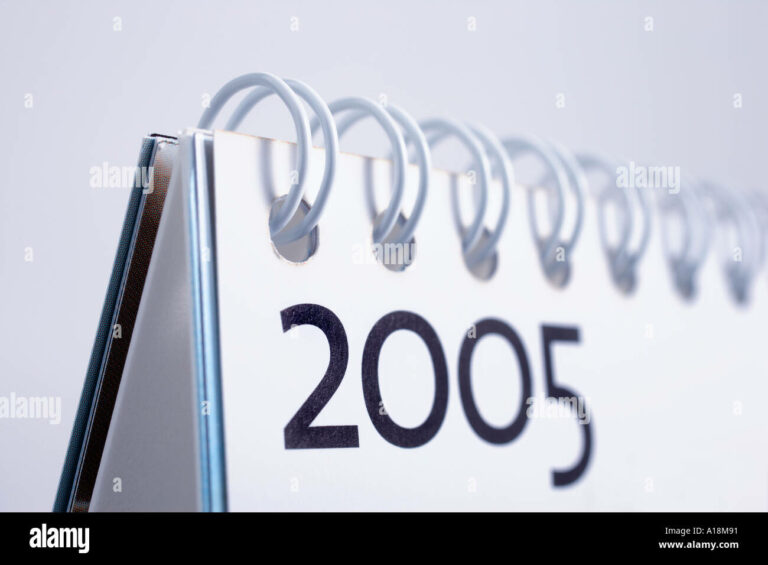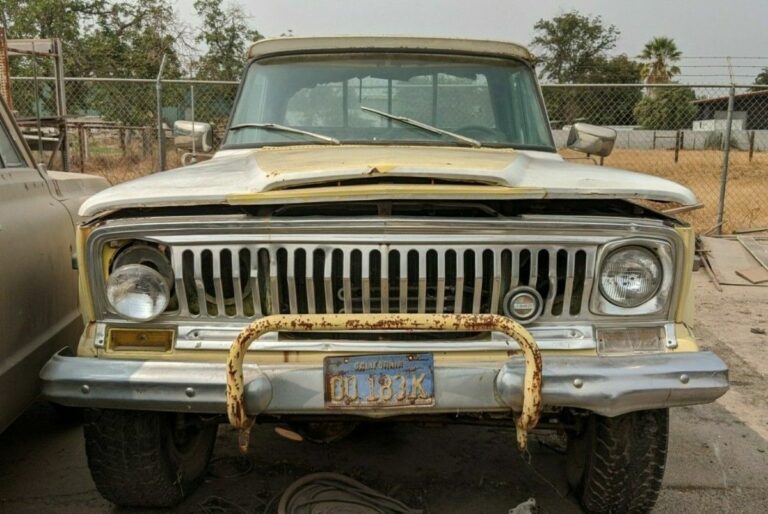1957 Jeep For Sale: A Timeless Icon on the Market
1957 Jeep For Sale: A Timeless Icon on the Market jeeps.truckstrend.com
The year 1957 holds a special place in the annals of automotive history, particularly for enthusiasts of rugged, no-nonsense vehicles. When you encounter "1957 Jeep For Sale," you’re not just looking at a used car; you’re discovering a piece of American industrial heritage, a symbol of post-war resilience, and an enduring testament to utilitarian design. These vehicles, born from the legendary Willys-Overland lineage, represent a pivotal moment in the evolution of the civilian utility vehicle, transitioning from pure military workhorses to versatile machines embraced by farmers, adventurers, and everyday Americans. For those seeking an authentic classic, a challenging restoration project, or a unique vehicle that stands out from the modern automotive landscape, a 1957 Jeep offers an unparalleled blend of nostalgia, robust engineering, and a genuine connection to a bygone era of motoring.
Historical Context: The 1957 Jeep Legacy
1957 Jeep For Sale: A Timeless Icon on the Market
By 1957, the Willys-Overland company, now under the ownership of Kaiser Motors and operating as Willys Motors, had firmly established the Jeep brand as synonymous with four-wheel drive capability. While the iconic flat-fender MB and CJ-2A models of the immediate post-war era had set the stage, 1957 saw a diverse range of Jeep vehicles on offer, each catering to different needs while retaining the core values of durability and off-road prowess.
The most recognizable models from this era were the CJ (Civilian Jeep) series. The CJ-3B, with its distinctive "high hood" to accommodate the taller F-head Hurricane engine, was still in production, offering a compact and highly capable off-roader. However, the CJ-5, introduced in 1955 and based on the Korean War M38A1 military Jeep, was quickly becoming the flagship civilian model. It featured a more refined design, slightly longer wheelbase, and improved ride quality compared to its predecessors, making it a popular choice for both work and recreation.
Beyond the CJs, Willys Motors also produced the versatile Willys Station Wagon and Pickup, which provided more enclosed space and utility for families and businesses. Additionally, the innovative Forward Control (FC) series (FC-150 and FC-170), with their cab-over-engine design for maximum cargo space, were gaining traction in commercial applications. Military variants like the M38A1 were also still very much in active service, sharing many components with their civilian counterparts. Owning a 1957 Jeep means connecting with this rich tapestry of American automotive innovation, a time when vehicles were built to last and perform, not just to impress.
Why Buy a 1957 Jeep? The Allure of a Classic
The decision to purchase a 1957 Jeep goes beyond simple transportation; it’s an investment in heritage, a lifestyle choice, and an entry into a passionate community.
- Unparalleled Authenticity: These vehicles embody a no-frills, function-over-form design philosophy. They offer a raw, engaging driving experience unlike anything modern.
- Historical Significance: Owning a 1957 Jeep is owning a piece of American history, a vehicle that helped shape industries, explore frontiers, and serve communities.
- Robust Simplicity: With fewer complex electronics and systems, 1957 Jeeps are generally easier for the mechanically inclined to maintain, repair, and even modify. Their simplicity is a significant draw for DIY enthusiasts.
- Off-Road Prowess: Even in stock form, these Jeeps are remarkably capable off-road. Their short wheelbases, high ground clearance (for the time), and legendary 4×4 systems make them excellent for trail adventures.
- Community and Collectibility: The classic Jeep community is vast and supportive, offering a wealth of knowledge, parts, and camaraderie. Well-maintained or restored 1957 Jeeps also tend to hold or increase their value, making them a tangible asset.
- Nostalgia and Character: For many, a 1957 Jeep evokes memories of a simpler time, of family adventures, or of iconic imagery from movies and popular culture. Each vehicle tells a story, often with charming imperfections that add to its character.


Types of 1957 Jeeps You Might Find For Sale
When searching for a 1957 Jeep, it’s crucial to understand the different models and their typical conditions:
- CJ-3B (High Hood): The evolution of the classic flat-fender, identifiable by its taller hood. Often sought after by purists and collectors due to its direct lineage from the original military Jeeps.
- CJ-5: The most common and arguably most iconic civilian Jeep from 1957. Easier to find parts for and a popular choice for both restoration and modification.
- Willys Station Wagon / Pickup: These larger, more family-oriented or commercial vehicles offer enclosed comfort and greater hauling capacity. While less "Jeep-like" in the traditional sense, they are highly collectible and capable in their own right.
- Forward Control (FC-150 / FC-170): A truly unique and relatively rare design. These cab-over-engine trucks offer impressive cargo space for their footprint and are distinct conversation starters. Finding one in good condition can be challenging.
- M38A1 (Military): While technically military vehicles, these are often found on the civilian market and share many characteristics with the CJ-5. They may feature specific military modifications or components.
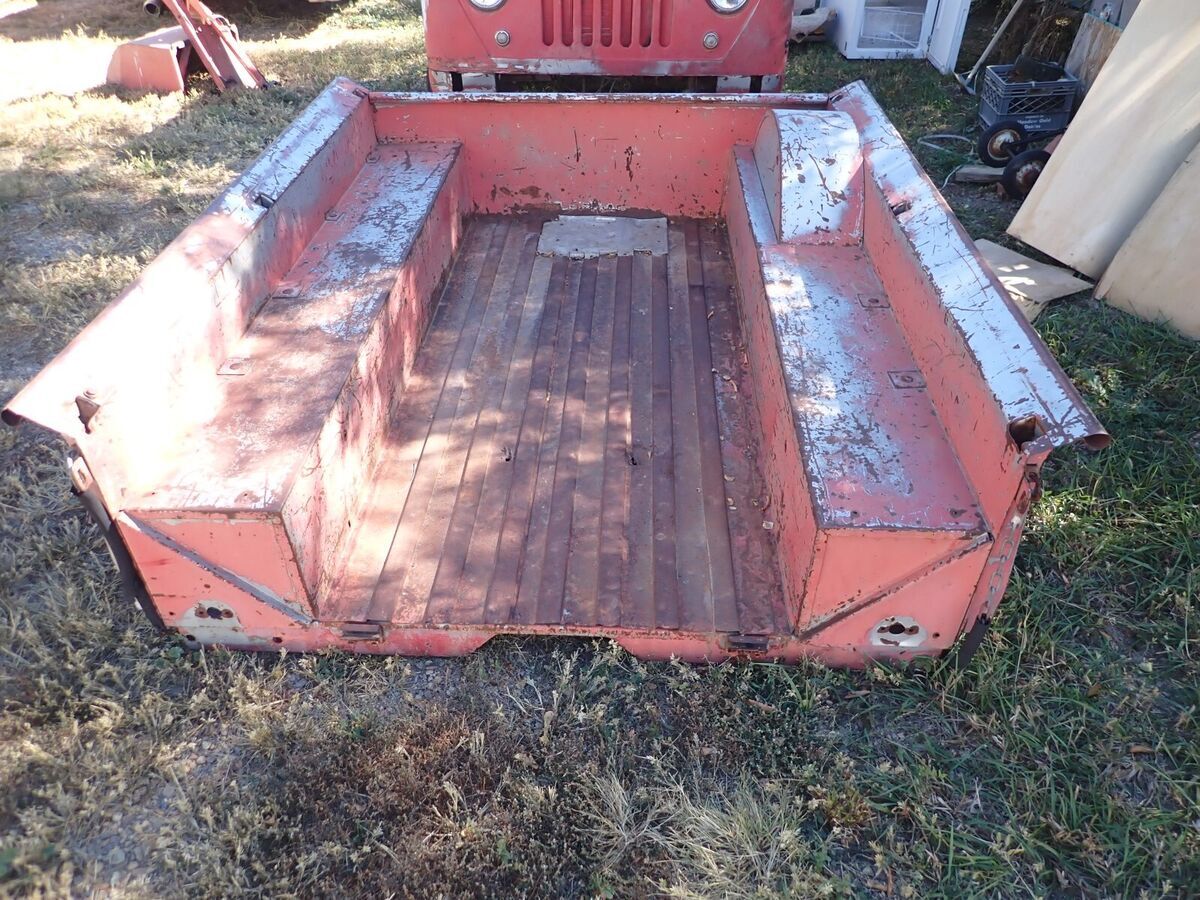
Condition Variations:
- Project Vehicle: Typically running but needing significant work (rust repair, mechanical overhaul, interior, paint). Often the most affordable entry point.
- Driver Quality: Functional and roadworthy, but likely has cosmetic flaws and may need ongoing maintenance.
- Good Condition / Partially Restored: Well-maintained, perhaps with some recent work done, but not a full frame-off restoration.
- Fully Restored / Show Quality: Meticulously brought back to original (or better-than-original) specifications. Commands the highest prices.
- Restomod: Combines the classic looks with modern mechanical components (engine swaps, updated suspension, disc brakes) for improved reliability and performance.
Key Considerations Before Buying a 1957 Jeep
Purchasing a vintage vehicle requires a different mindset than buying a modern one. Due diligence is paramount.
- Rust, Rust, Rust: This is the number one enemy of old Jeeps. Inspect the frame (especially where spring hangers attach), body tub (floorboards, hat channels under the floor, cowl), fenders, and tailgate. Surface rust is manageable; structural rust requires significant, costly repair.
- Mechanical Condition: Evaluate the engine (smoke, strange noises, leaks), transmission (shifting, grinding), transfer case, axles, and steering. A professional pre-purchase inspection by a vintage vehicle specialist is highly recommended.
- Originality vs. Modifications: Decide if you want a historically accurate vehicle or one with modern upgrades. Originality often commands a higher price among collectors, while tasteful modifications can enhance usability.
- Parts Availability: For CJ models, parts are surprisingly plentiful thanks to aftermarket suppliers and a strong community. Rarer models like the FC series may require more effort to source specific components.
- Your Skill Set & Budget for Restoration: Be realistic about your mechanical abilities. If you plan to DIY, ensure you have the tools and space. If not, factor in professional restoration costs, which can easily exceed the purchase price.
- Legalities and Titling: Verify the VIN (Vehicle Identification Number) matches the title. Ensure the title is clear and transferable in your state. Some older vehicles may have unique registration requirements.
- Purpose of Use: Will it be a weekend cruiser, an off-road toy, a show vehicle, or a daily driver (which is generally not recommended for stock 1957 Jeeps due to modern safety standards)? Your purpose will dictate the ideal condition and necessary modifications.
Where to Find a 1957 Jeep For Sale
The search for a classic 1957 Jeep can be an adventure in itself.
- Online Marketplaces: Websites like eBay Motors, Craigslist, and Facebook Marketplace are common starting points, offering a wide range of conditions and prices. Be wary of scams and always verify listings.
- Classic Car & Jeep Specific Websites: Sites like Bring a Trailer, Hemmings, WillysTech.com forums, and various classic Jeep clubs often list vehicles for sale, sometimes with more detailed information and higher quality photos.
- Auctions: Major automotive auctions (e.g., Barrett-Jackson, Mecum) sometimes feature high-end restored Jeeps, while local auctions might offer project vehicles.
- Specialty Dealerships & Restorers: Some businesses specialize in classic Jeeps, offering restored vehicles with warranties or taking on custom restoration projects. This is often the most expensive option but provides peace of mind.
- Word-of-Mouth & Local Classifieds: Don’t underestimate the power of local connections. Check community bulletin boards, local auto traders, and ask around at car shows or antique vehicle events.
The Buying Process: Tips for a Smooth Acquisition
Once you’ve found a potential candidate, follow these steps to ensure a wise purchase:
- Thorough Research: Understand the specific model you’re looking at. Know common problem areas and expected performance.
- Set a Realistic Budget: This isn’t just the purchase price. Factor in shipping, insurance, immediate repairs, potential restoration costs, and ongoing maintenance.
- Inspect, Inspect, Inspect:
- In Person: Nothing beats seeing the vehicle firsthand. Bring a flashlight, a magnet (to check for bondo over rust), and a knowledgeable friend if possible.
- Pre-Purchase Inspection (PPI): If you’re serious, especially for higher-priced vehicles or if buying remotely, hire a professional mechanic specializing in vintage vehicles to conduct a comprehensive inspection.
- Test Drive: Listen for unusual noises, check steering, brakes, and transmission. Test 4WD engagement. Remember, it won’t drive like a modern car.
- Review Documentation: Verify the title is clear and matches the VIN on the vehicle. Ask for service records, previous registration, or any other historical documents.
- Negotiate: Don’t be afraid to haggle, especially if you’ve identified issues during inspection.
- Arrange Transportation: Plan how you’ll get the Jeep home, especially if it’s not roadworthy or if you’re buying out of state.
Potential Challenges and Solutions
Owning a vintage Jeep comes with its unique set of challenges, but most have viable solutions.
- Extensive Rust:
- Challenge: Deep, structural rust requiring welding or panel replacement.
- Solution: Source reproduction body tubs, floor pans, and frame sections from specialty manufacturers. Find a reputable welder or body shop experienced with classic vehicles.
- Mechanical Issues:
- Challenge: Worn out engines, transmissions, or driveline components.
- Solution: Most components can be rebuilt or replaced. Aftermarket suppliers offer everything from engine rebuild kits to complete new transmissions. Join online forums for troubleshooting and advice.
- Safety (by Modern Standards):
- Challenge: Lack of airbags, ABS, crumple zones, often only lap belts, drum brakes.
- Solution: Drive defensively. Consider upgrades like three-point seatbelts, disc brake conversions, and improved lighting for safer operation. These are "restomod" enhancements.
- Finding Specific Parts (for rarer models):
- Challenge: Obscure parts for FCs or non-CJ models can be hard to locate.
- Solution: Network with other owners, search online forums and specialized salvage yards, and be prepared to wait or pay a premium. Fabrication may sometimes be necessary.
- Cost of Restoration:
- Challenge: Restoration costs can quickly spiral out of control, easily exceeding the vehicle’s market value.
- Solution: Plan your project meticulously. Prioritize repairs. Do as much work as you can yourself. Set a budget and stick to it, or consider a "rolling restoration" over several years.
1957 Jeep For Sale: Estimated Price Guide
The price of a 1957 Jeep can vary dramatically based on model, condition, originality, and location. This table provides a general guideline:
| Model Type | Condition: Project (Needs Major Work) | Condition: Driver (Functional, Cosmetic Flaws) | Condition: Good (Well-Maintained, Minor Flaws) | Condition: Fully Restored / Show Quality |
|---|---|---|---|---|
| CJ-3B (High Hood) | $5,000 – $10,000 | $12,000 – $20,000 | $22,000 – $35,000 | $38,000 – $60,000+ |
| CJ-5 | $4,000 – $9,000 | $10,000 – $18,000 | $20,000 – $30,000 | $32,000 – $55,000+ |
| Willys Station Wagon | $3,000 – $8,000 | $8,000 – $15,000 | $16,000 – $25,000 | $28,000 – $45,000+ |
| Willys Pickup | $3,500 – $9,000 | $9,000 – $16,000 | $18,000 – $28,000 | $30,000 – $50,000+ |
| Forward Control (FC) | $6,000 – $15,000 | $15,000 – $28,000 | $30,000 – $50,000 | $55,000 – $90,000+ |
Note: Prices are estimates and can fluctuate based on market demand, specific modifications (e.g., engine swaps, lift kits), geographical location, and seller motivation. Rare original parts, unique history, or very low mileage can significantly increase value.
Frequently Asked Questions (FAQ)
Q1: What specific Jeep models were available in 1957?
A1: In 1957, Willys Motors offered the CJ-3B, CJ-5, Willys Station Wagon, Willys Pickup, and the Forward Control (FC-150 and FC-170) series. Military variants like the M38A1 were also still in production.
Q2: Are parts hard to find for a 1957 Jeep?
A2: For CJ-3B and CJ-5 models, parts are surprisingly accessible through numerous aftermarket suppliers, online retailers, and a robust community of enthusiasts. Parts for rarer models like the Forward Control series or specific Willys Station Wagon components can be more challenging to source, sometimes requiring fabrication or diligent searching.
Q3: Can a 1957 Jeep be a daily driver?
A3: While technically possible, a stock 1957 Jeep is generally not recommended as a daily driver by modern standards. They lack modern safety features (airbags, ABS), have slower acceleration, manual steering, and drum brakes, making them less comfortable and less safe in modern traffic. Many owners opt for "restomod" upgrades (engine swap, power steering, disc brakes) to improve daily drivability.
Q4: What are the most common rust spots to check on a 1957 Jeep?
A4: Critical areas for rust include the frame (especially near spring hangers and body mounts), the body tub (floorboards, hat channels under the floor, cowl, and areas where the body meets the frame), fenders, and the tailgate. Use a magnet to detect areas filled with body filler.
Q5: What’s the typical fuel economy of a 1957 Jeep?
A5: Fuel economy for a 1957 Jeep is generally poor by modern standards, typically ranging from 10-18 miles per gallon, depending on the engine (Hurricane F-head or L-head), transmission, gearing, and driving conditions.
Q6: Are 1957 Jeeps safe to drive?
A6: Compared to modern vehicles, 1957 Jeeps lack contemporary safety features. They typically have no airbags, often only lap belts, manual steering, and drum brakes. Drivers must be highly attentive and defensive. Many owners upgrade to 3-point seatbelts, disc brakes, and improved lighting to enhance safety.
Q7: What’s the average cost of a full restoration for a 1957 Jeep?
A7: A full, professional frame-off restoration for a 1957 Jeep can range from $25,000 to $60,000 or more, depending on the initial condition of the vehicle, the desired level of finish, and labor rates. It’s common for restoration costs to exceed the vehicle’s market value, so it’s often a labor of love rather than a pure financial investment.
Conclusion
The hunt for a "1957 Jeep For Sale" is an exciting prospect for anyone who appreciates classic vehicles, robust engineering, and a tangible connection to American history. Whether you dream of a meticulously restored showpiece, a rugged off-road companion, or a challenging project to bring back to life, these venerable machines offer a unique and rewarding ownership experience. Approach your search with thorough research, a keen eye for detail, and a realistic understanding of the commitment involved. When you finally turn the key and hear that vintage engine roar, you’ll know you’ve acquired more than just a vehicle – you’ve become the steward of a timeless icon, ready for new adventures on and off the beaten path.

